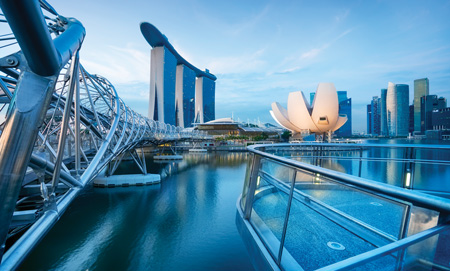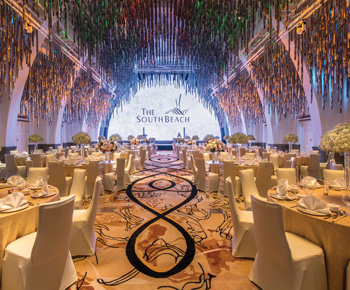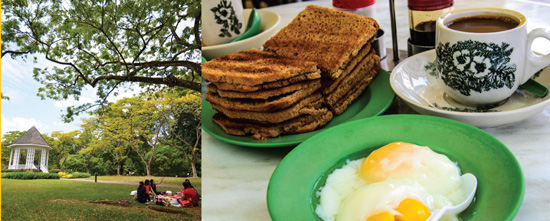
The island nation is the top Asian city in ICCA’s 2014 list
Thanks to numerous large-scale events and high-profile conference wins, the country’s ranking looks solid in the face of global headwinds. By Paige Lee Pei Qi
Singapore continues to outshine its Asian counterparts with its accolade of being the top Asian city to be ranked among the top 10 convention cities in the world by the International Congress and Convention Association (ICCA) in 2014.
Steadily maintaining its position as Asia’s Top Convention City for 13 consecutive years while finishing seventh in the overall ranking of convention cities, Singapore hosted 142 ICCA events in 2014, a dip however, from the record 175 ICCA events held in 2013.
Singapore put forth another stellar performance in 2015, with STB supporting more than 350 business events in 2015 – a 27 per cent year-on-year increase from 2014. This resulted in 287,000 visitor arrivals, a year-on-year hike of 0.3 per cent.
According to Jeannie Lim, executive director, exhibitions and conferences, conventions and meetings, Singapore Tourism Board (STB), Singapore welcomed the prestigious World Confederation of Physical Therapy Congress last May – the first time it was held in Asia – which saw more than 4,100 participants from 114 countries.
Returning to Singapore last October, after 12 years, was the world’s premier financial services event Sibos 2015, which attracted 8,200 delegates from all over the world, making it the largest Sibos event in Asia-Pacific.
Sven Bossu, head of Sibos, said: “What made us return to Singapore was the city infrastructure that has luxurious conference halls and leisure amenities near to one another, allowing us to enhance our event.”
“For instance, the Gardens by the Bay is close to our event venue, Marina Bay Sands, allowing us to organise a 5km fun run and walk before the start of the day. This gives delegates a chance to better know each other in an informal setting that may potentially lead to a business partnership,” Bossu added.
According to Vincent Yap, assistant director, institutional division of MCI Group Asia Pacific, 2015 has been a “full year for MCI” with a good run of association events.
Explaining the appeal of the destination, Yap said: “Apart from the easy access, stable political structure and vibrant economy, most MNCs have a local presence in Singapore, which helps to provide an attractive proposition for association conferences, as they seek corporate sponsorship to fund the event.”
Hailing the new Global Association Hubs Partnership with Dubai, Washington DC, and Brussels as a “siginificant milestone” last year, STB’s Lim explained: “This (partnership) was formed in response to the increasing decentralisation of international associations and it aims to raise standards and grow the presence of them in each of the four partner cities.”
Through this partnership, Lim said: “Singapore aims to be a platform for international associations to grow and build their capacity in the region, create opportunities for local and regional associations to develop their global membership base, and cultivate best practices.”
However, even as the business events sector continues to shine, there was an overall six per cent fall in BTMICE visitor arrivals last year, with a corresponding eight per cent drop in per capita expenditure, according to the STB’s latest statistics unveiled on March 1.
According to STB chief executive Lionel Yeo, factors like companies cutting back on both travel and trip budgets were reasons behind the decline in business travel arrivals and spend.
STB’s deputy chief executive, Melissa Ow, added that China and India took a great hit in terms of business travel traffic.
“We recognise business traffic will be subjected to some of the conditions that will impact overall economies,” Ow said. “That means there are many opportunities for us to think about how we might grow our business events.”
However business might be in the coming years, the Lion City can rejoice now over several big wins in its bag. They include the International Council of Nurses World Congress 2019 which will see 3,000 visitors, the Intelligent Transport Systems World Congress 2019 which is expecting 6,000 guests, and the Lions Clubs International Convention 2020 for an impressive 20,000 guests.
{Taking Numbers}

{Insider}
Andrew Koh, managing director of Events Architects
Andrew Koh, managing director of Events Architects, proposes three local must-dos
Start your day at a hawker centre
Singapore is famed for its great tasting and affordable food at hawker centres. Experience the hustle and bustle of a typical Singapore morning. Try a popular breakfast option of bread with kaya (coconut jam) and learn to order your hot beverage the local way.
Tour Singapore’s few remaining farms
Visit fisheries and the few remaining agriculture and horticulture farms at Kranji Countryside.
Alternatively, go on a self-guided tour and learn about the magnificent history of Kranji, Lim Chu Kang, Neo Tiew and Choa Chu Kang enclaves through the Kranji Heritage Trail.
Visit the country’s first UNESCO World Heritage site
Inscribed as a UNESCO World Heritage Site in 2015, the Singapore Botanic Gardens is the first and only tropical botanic garden on the list. With a rich history of more than a 150 years, the gardens offer visitors a wide range of self-walking trails to choose from. Free guided tours by volunteers on selected days are also available.
{Spotlight}
All that glitters is silver
Feast your eyes upon the first Philippe Starck-designed hotel in Singapore, The South Beach, which has already been hailed as a visual stunner in the heart of Singapore’s city landscape.
This 654-room designer luxury hotel features an extravagant ballroom that promises to charm your delegates. The grand ballroom, À La Carte, which hosted its first event in October last year, is located in one of the hotel’s four heritage buildings. It seats 370 guests banquet-style, with 320 guests seated on the ballroom floor and 50 guests seated on the mezzanine level which overlooks the entire ballroom.
The venue’s high ceiling is adorned with a “Forest of Lights “– a 11,520-light installation designed by Philippe Starck. The venue is also home to a expansive 9.5m high by 15.8m wide LED wall for projections. Situated within the ballroom are pre-function spaces as well as a VIP holding room.
Also available are 15 additional meeting rooms that are customisable and conducive for private meetings, breakout sessions, product launches as well as exclusive lunches and dinners. Suitable for a variety of group sizes, the meeting rooms can be combined to cater to groups of up to 72.
A spokesman from The South Beach said: “MICE planners have the luxury of curating event programmes to suit the needs of their guests through the spaces and facilities in and around the grand ballroom.”
“From gala dinners to trade conferences and events, they will find added charisma and gravitas from the historical value of the grand ballroom as it is housed in a standalone heritage building featuring expansive high ceilings,” the spokesman added.
The hotel is part of the South Beach mixed-use development which incorporates heritage sites – three army blocks and the well-known Non-Commissioned Officers (NCO) Club – along with two new tower blocks. The Court Martial Bar, set in one of the army blocks, draws on its courthouse history to serve concept drinks.
The second 1,200m2 army block, South Beach Quarter, is home to four new F&B concepts by lifestyle group Massive Collection. These include Vanity, a cocktail bar; Vatos Urban Tacos, a Korean-Mexican restaurant; The Armoury, a gastropub with a wide range of craft beers and boutique wines; and a nightclub.

The South Beach Grand ballroom in all its shimmering
splendour
























